Abstract
The relationship between training conditions and stimulus generalization gradients was examined using tandem schedules of reinforcement. Schedules were selected so that frequency of reinforcement and rate of responding were varied somewhat independently of each other. A peak-shift in the generalization gradient was obtained when extinction had been associated with one of the stimuli. No comparable peak shift was obtained when there were equal response rates in the training stimuli even with dissimilar frequencies of reinforcement. The data imply that response rates at the end of training, rather than reinforcement frequency per se, determine the characteristics of the generalization gradient.
Full text
PDF
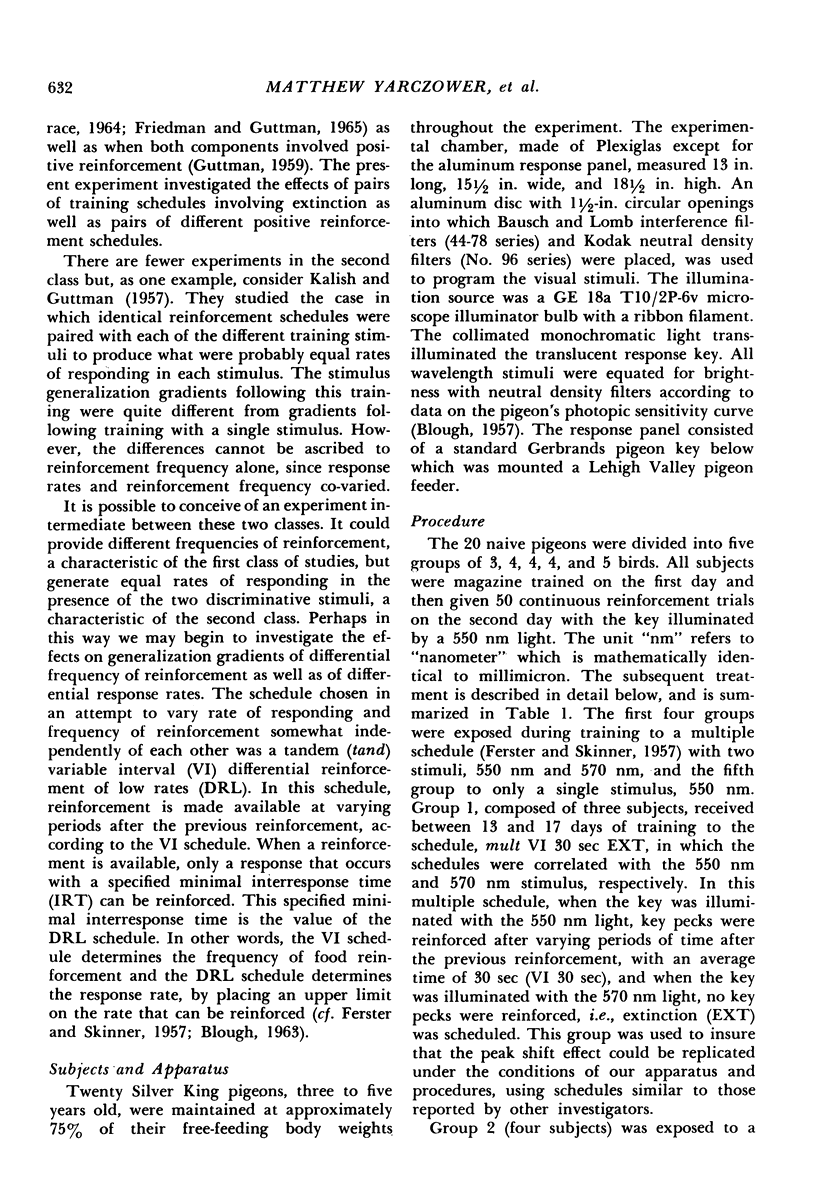
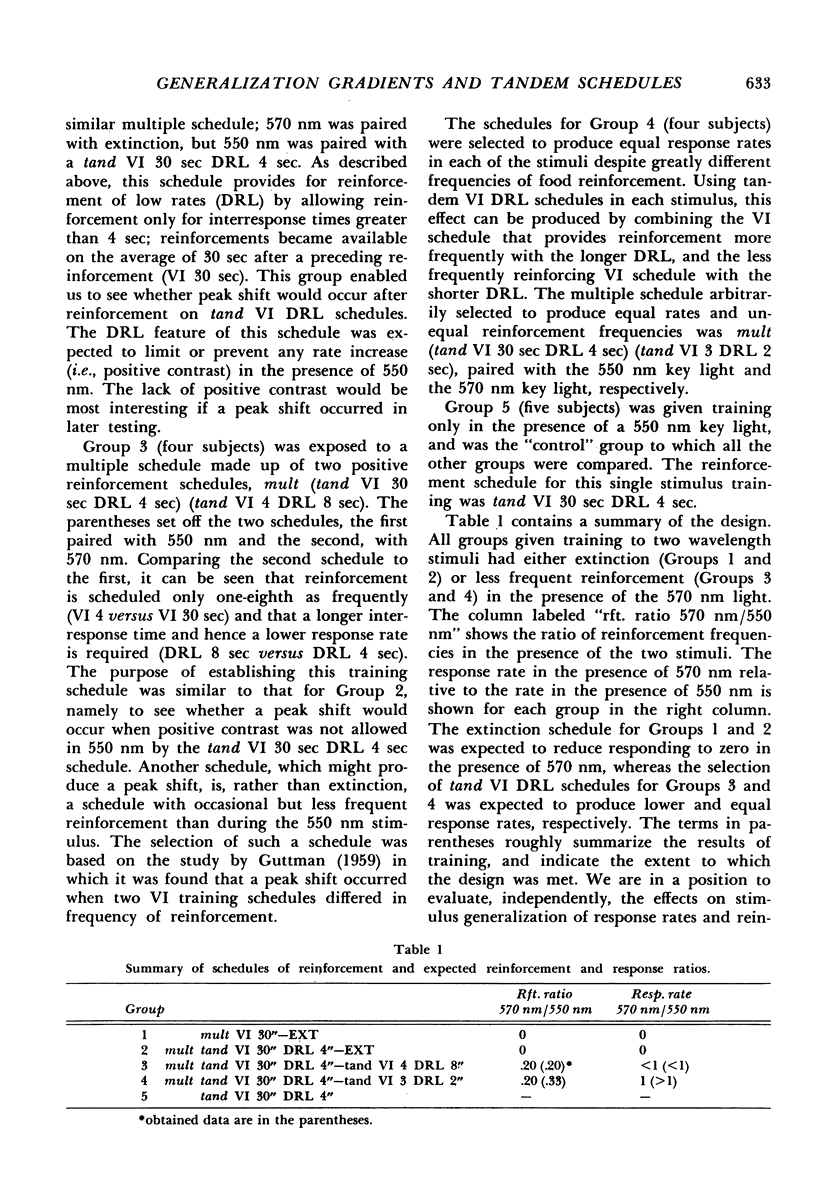
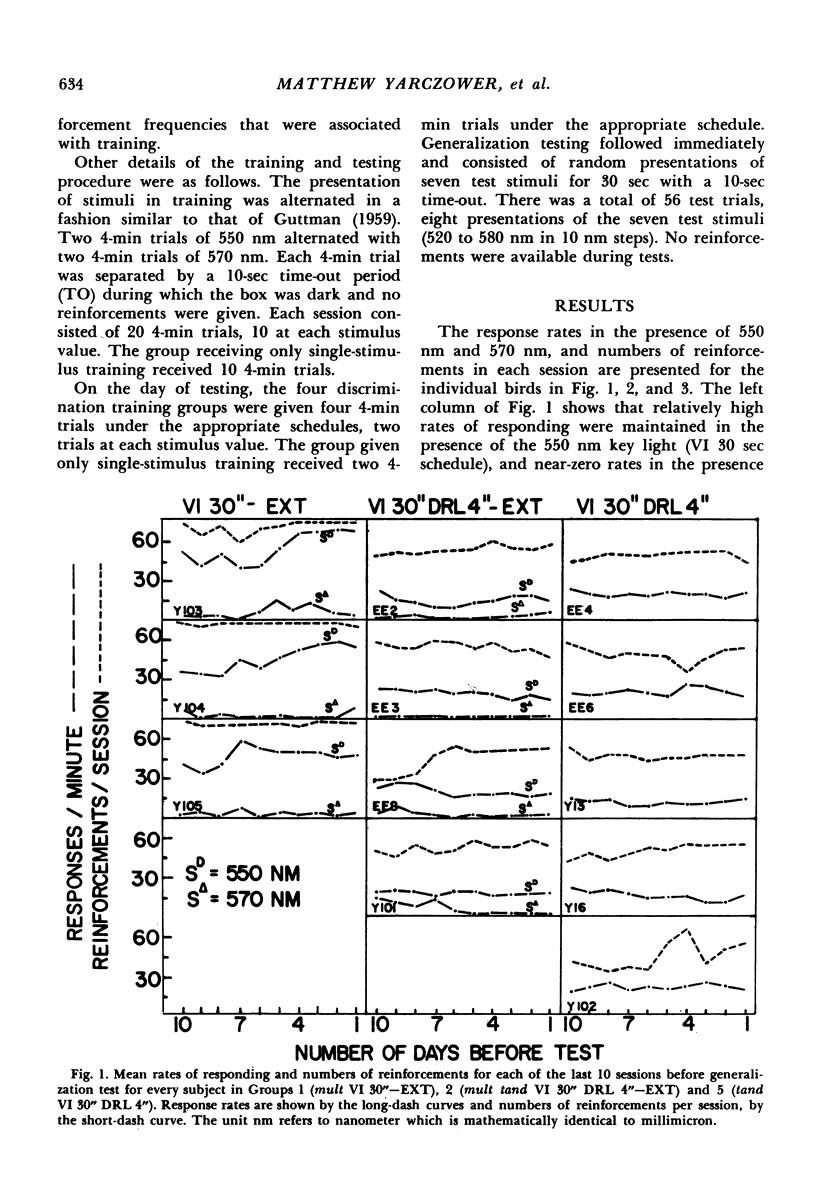
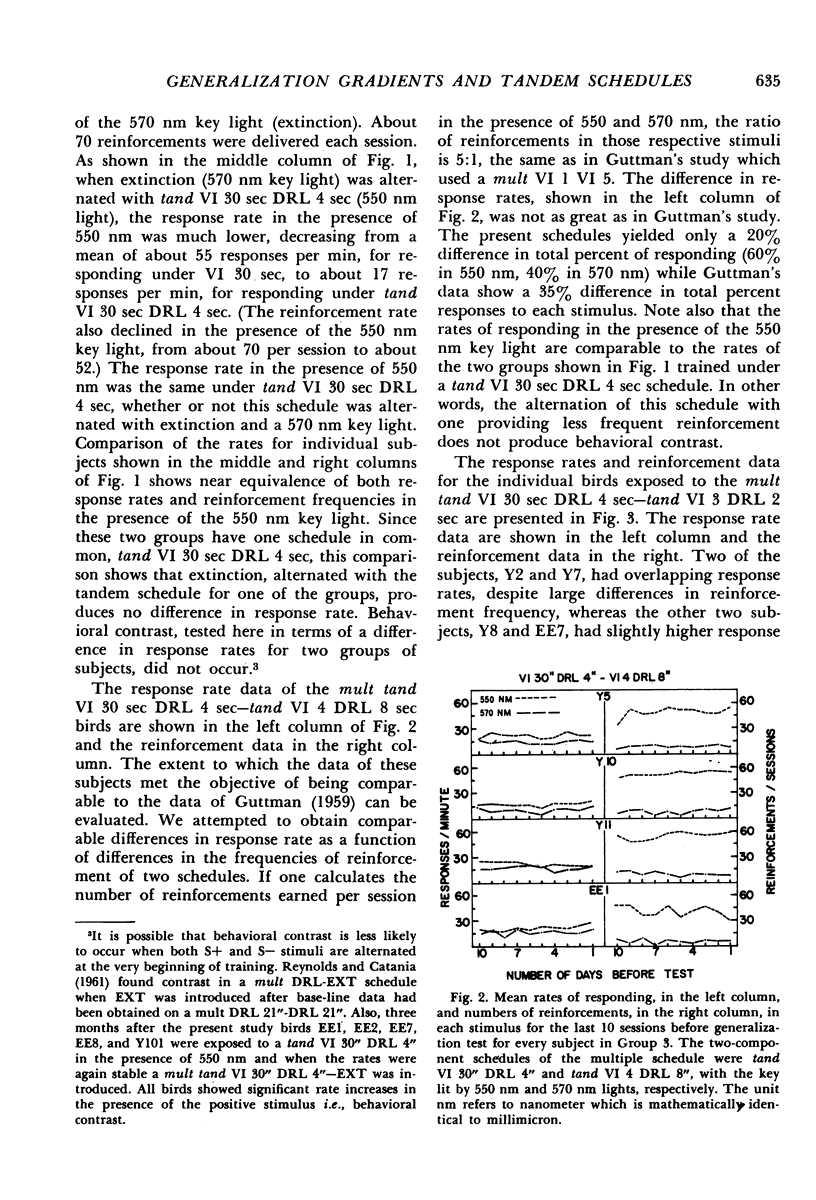
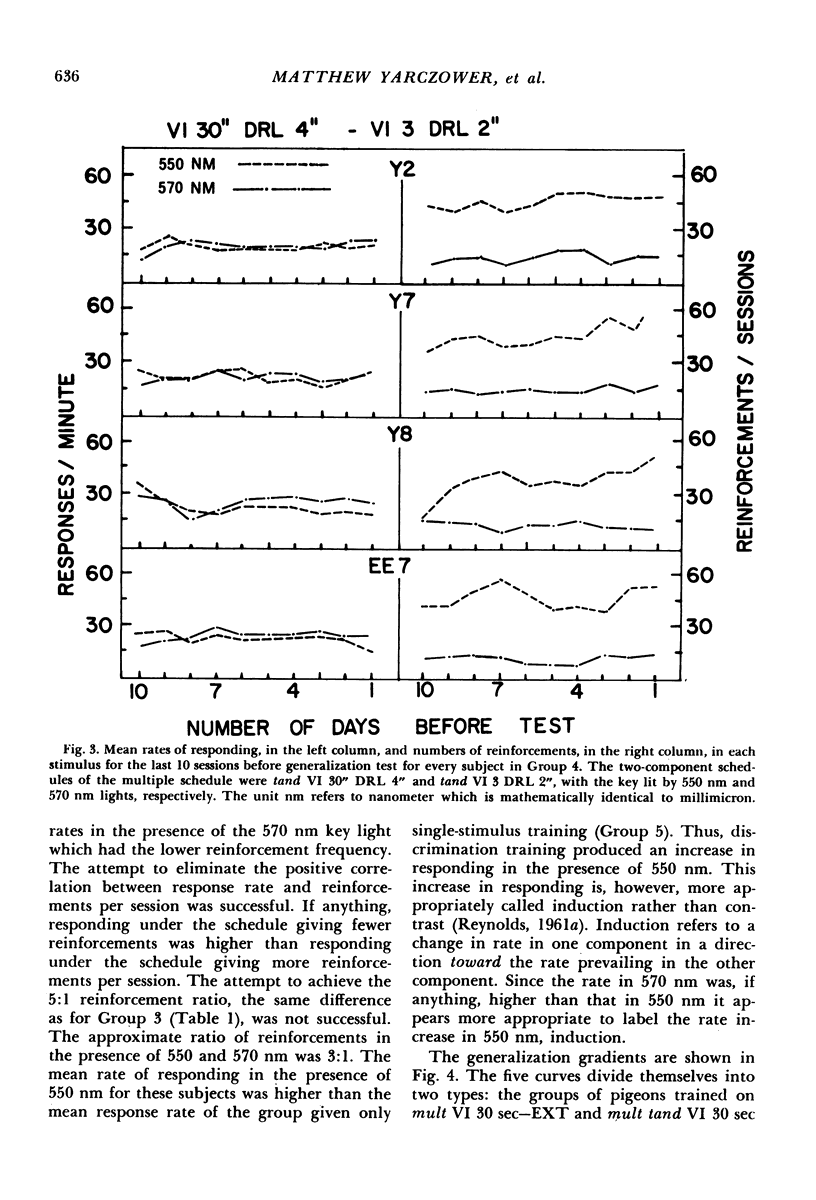
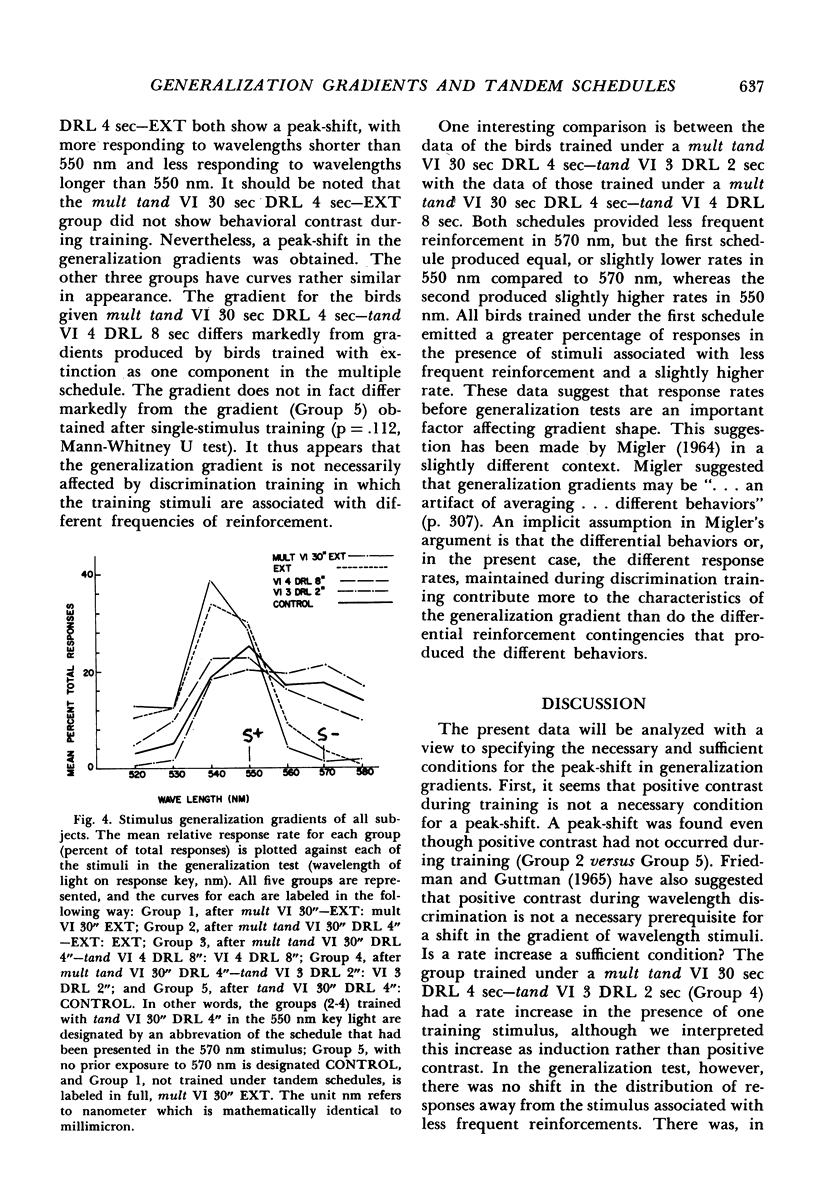
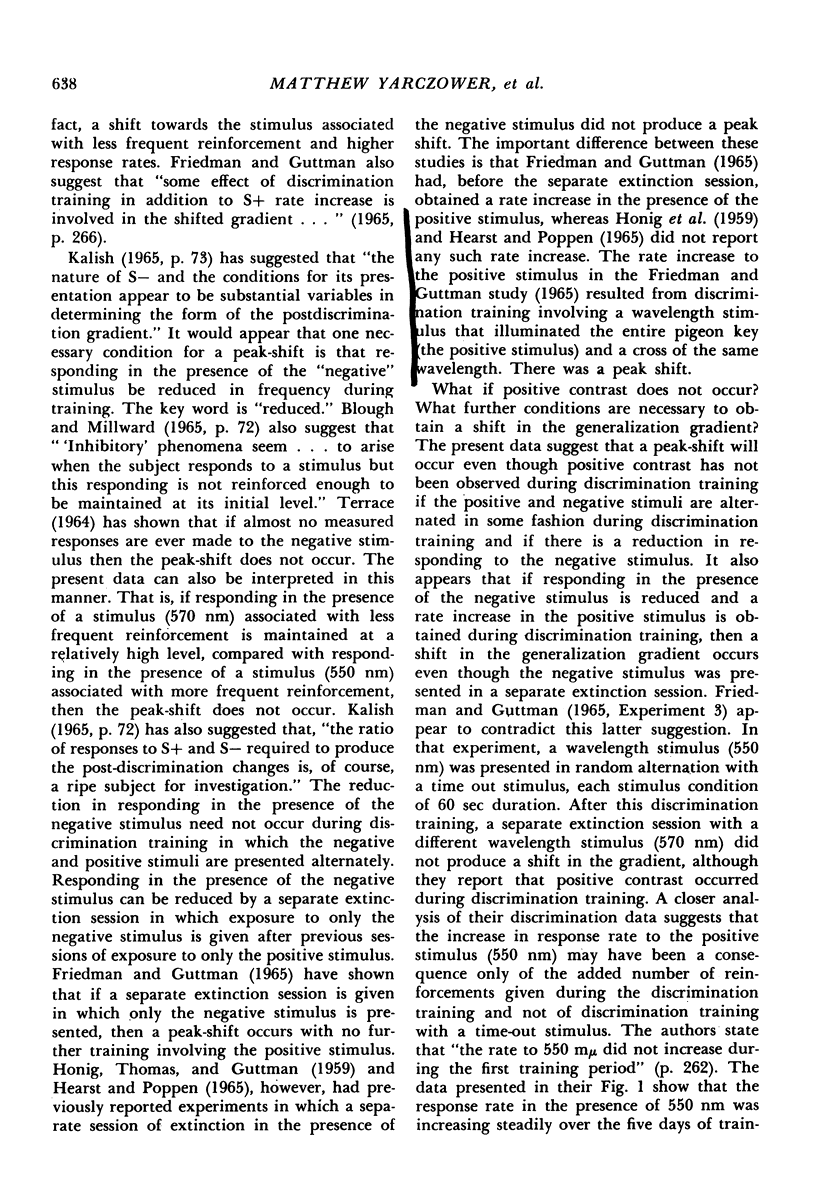
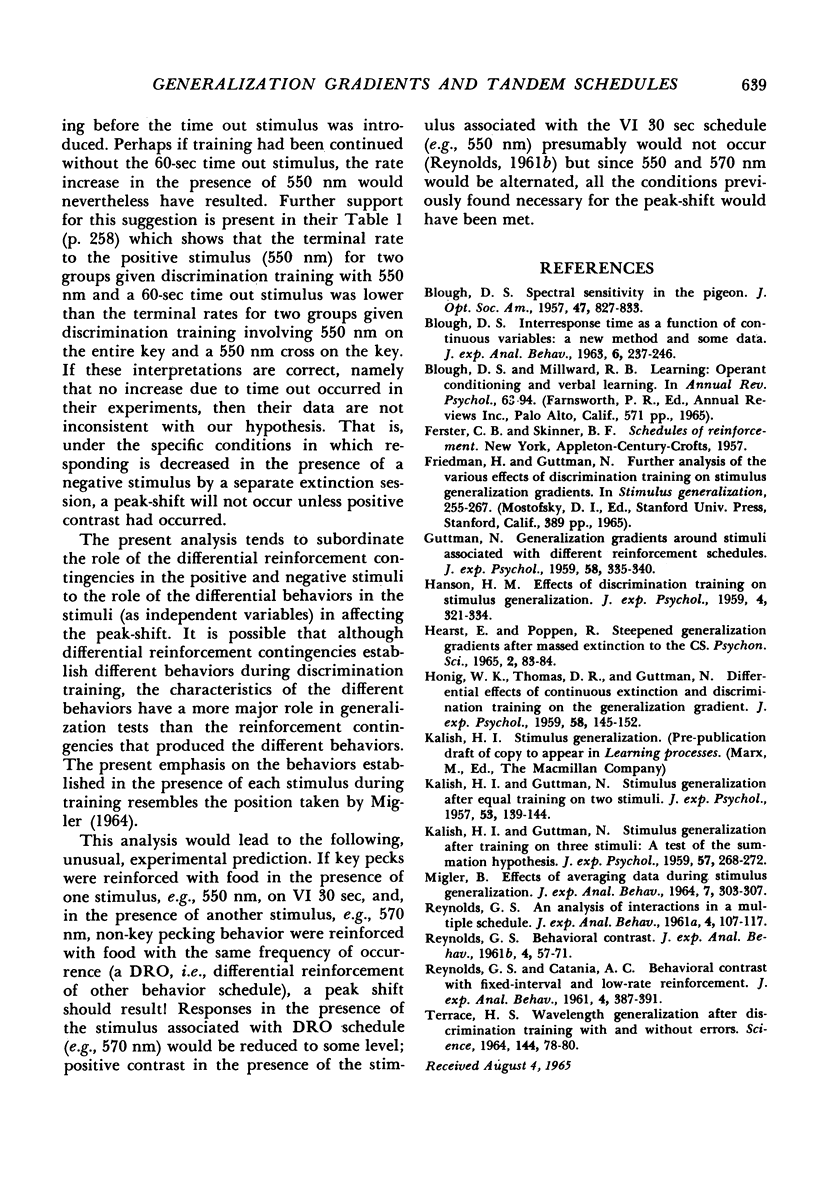
Selected References
These references are in PubMed. This may not be the complete list of references from this article.
- BLOUGH D. S. Spectral sensitivity in the pigeon. J Opt Soc Am. 1957 Sep;47(9):827–833. doi: 10.1364/josa.47.000827. [DOI] [PubMed] [Google Scholar]
- Blough D. S. Interresponse time as a function of continuous variables: a new method and some data. J Exp Anal Behav. 1963 Apr;6(2):237–246. doi: 10.1901/jeab.1963.6-237. [DOI] [PMC free article] [PubMed] [Google Scholar]
- GUTTMAN N. Generalization gradients around stimuli associated with different reinforcement schedules. J Exp Psychol. 1959 Nov;58:335–340. doi: 10.1037/h0045679. [DOI] [PubMed] [Google Scholar]
- HANSON H. M. Effects of discrimination training on stimulus generalization. J Exp Psychol. 1959 Nov;58:321–334. doi: 10.1037/h0042606. [DOI] [PubMed] [Google Scholar]
- HONIG W. K., THOMAS D. R., GUTTM AN N. Differential effects of continuous extinction and discrimination training on the generalization gradient. J Exp Psychol. 1959 Aug;58:145–152. doi: 10.1037/h0048484. [DOI] [PubMed] [Google Scholar]
- KALISH H. I., GUTTMAN N. Stimulus generalization after equal training on two stimuli. J Exp Psychol. 1957 Feb;53(2):139–144. doi: 10.1037/h0047916. [DOI] [PubMed] [Google Scholar]
- KALISH H. I., GUTTMAN N. Stimulus generalization after training on three stimuli: a test of the summation hypothesis. J Exp Psychol. 1959 Apr;57(4):268–272. doi: 10.1037/h0046433. [DOI] [PubMed] [Google Scholar]
- MIGLER B. EFFECTS OF AVERAGING DATA DURING STIMULUS GENERALIZATION. J Exp Anal Behav. 1964 Jul;7:303–307. doi: 10.1901/jeab.1964.7-303. [DOI] [PMC free article] [PubMed] [Google Scholar]
- REYNOLDS G. S. Behavioral contrast. J Exp Anal Behav. 1961 Jan;4:57–71. doi: 10.1901/jeab.1961.4-57. [DOI] [PMC free article] [PubMed] [Google Scholar]
- REYNOLDS G. S., CATANIA A. C. Behavioral contrast with fixed interval and low-rate reinforcement. J Exp Anal Behav. 1961 Oct;4:387–391. doi: 10.1901/jeab.1961.4-387. [DOI] [PMC free article] [PubMed] [Google Scholar]
- Reynolds G. S. An analysis of interactions in a multiple schedule. J Exp Anal Behav. 1961 Apr;4(2):107–117. doi: 10.1901/jeab.1961.4-107. [DOI] [PMC free article] [PubMed] [Google Scholar]
- TERRACE H. S. WAVELENGTH GENERALIZATION AFTER DISCRIMINATION LEARNING WITH AND WITHOUT ERRORS. Science. 1964 Apr 3;144(3614):78–80. doi: 10.1126/science.144.3614.78. [DOI] [PubMed] [Google Scholar]


